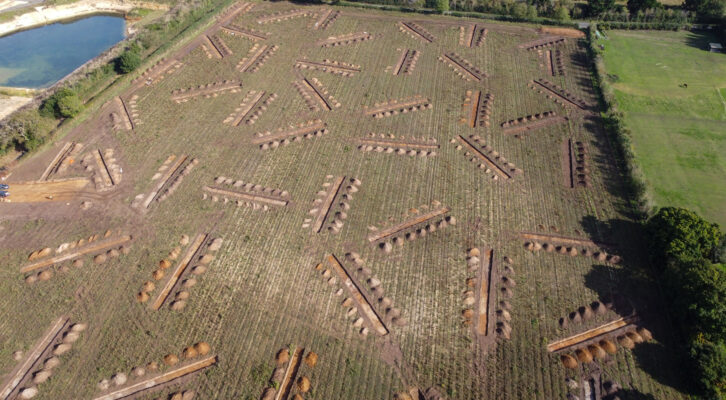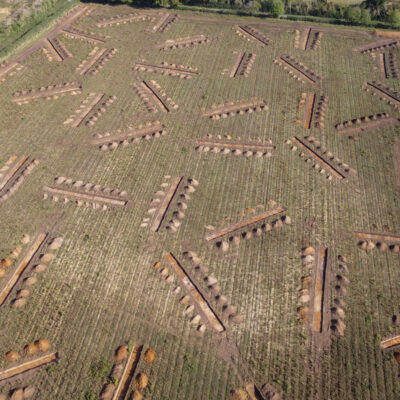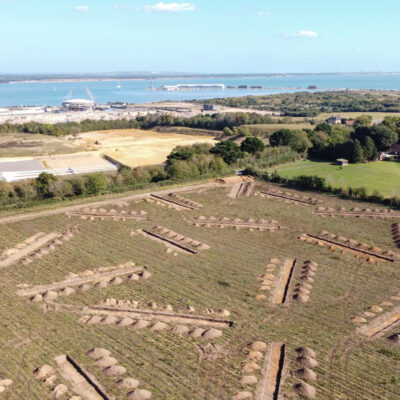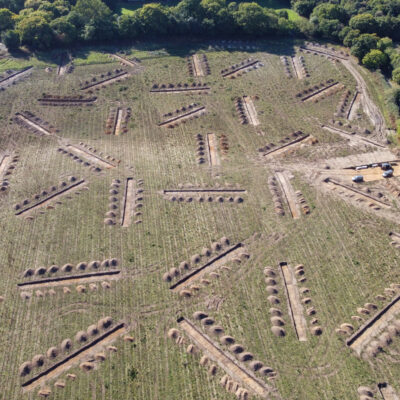Archaeological Evaluation, New Forest
Overlooking Southampton Water, within the National Park, the site comprised a large field in an area rich in evidence for prehistoric occupation and peat deposits dating from the Late Mesolithic through to the Middle Bronze Age.

In Brief
Key Points
- Sand and gravel extraction area of c. 80,350 sqm
- Multi-period archaeological landscape
- Late Iron Age settlement evidence found
Summary
Previous discoveries included the Badminton Hoard of Late Bronze Age socketed axe-heads and finds of high-status Celtic metalwork denoting a possible Late Iron Age trading settlement.
The evaluation phase involved opening 60 trenches across the field, which revealed further evidence of a complex Late Iron Age landscape with evidence of settlement or industrial features within or close to the site.
Results
Discoveries included two enclosures in the northern part of the field and a possible roundhouse or ring-gully at the southern end, with pieces of straw-tempered daub offering tantalising evidence of Late Iron Age domesticity.
Extensive boundary features ran through multiple trenches, with a widespread and complex arrangement of intercutting smaller gullies and discrete features also recorded, along with the remains of a palaeochannel and buried soil horizon.
Evidence of settlement abandonment was found on the eastern side of the field and the site appears to have been deserted until the medieval period, when the land belonged to Glastonbury Abbey and supported six households. Finds of medieval green glazed ware, although limited, pointed to some form of activity on the site during this period.




